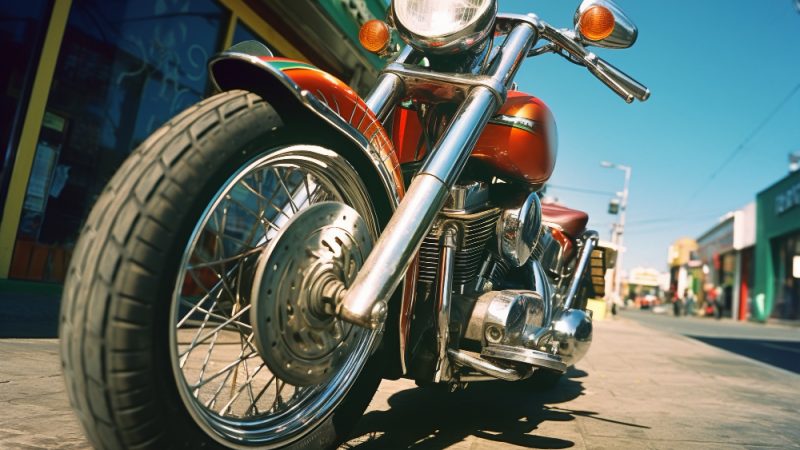Lowriders bikes are not just bicycles; they are symbols of creativity, cultural identity, and a passion for customization. Originating from the vibrant streets of Chicano neighborhoods in the 1960s, lowriders-bikes have evolved into an iconic form of self-expression and community pride. This comprehensive guide explores the history, design elements, cultural significance, maintenance tips, and future trends of lowriders-bikes, offering enthusiasts and curious readers alike a deep dive into this unique subculture.
1. History of Lowriders Bikes
The history of lowriders bikes traces back to the cultural movement that began in Mexican-American communities, particularly in California. Inspired by the lowrider car culture, which emphasized customizing vehicles with lowered suspensions and intricate paint jobs, lowriders-bikes emerged as a more accessible form of expression. Early adopters transformed ordinary bicycles into rolling artworks, showcasing their creativity and craftsmanship.
Over the decades, lowriders bikes have evolved from simple modifications to elaborate designs that incorporate intricate details and custom features. The movement spread beyond California, influencing communities across the United States and beyond, each adding their own cultural elements and design aesthetics.
2. Design Elements of Lowriders-Bikes
What defines a lowriders bike? It’s a combination of unique design elements that set it apart from conventional bicycles. Key features include:
Frame Modifications: Frames are often customized to lower the bike’s profile and create a sleek, elongated look.
Paint and Graphics: Elaborate paint jobs with vibrant colors, pinstriping, and airbrushed murals are common, reflecting personal and cultural motifs.
Chrome and Metalwork: Chrome-plated parts and custom metalwork add a touch of luxury and shine.
Upholstery and Seat Designs: Customized seats often feature plush materials, embroidery, or leatherwork, enhancing both comfort and aesthetics.
Wheels and Tires: Wide, whitewall tires and custom rims contribute to the lowrider aesthetic, complementing the bike’s overall design.
These design elements not only enhance the bike’s appearance but also reflect the owner’s personality and cultural heritage.
3. Iconic Lowriders Bikes Models
Several models have achieved iconic status within the lowriders-bikes community, showcasing the diversity and creativity of its enthusiasts. Some notable examples include:
Schwinn Stingray: This classic model from the 1960s remains a favorite among collectors and riders for its distinctive frame and handlebar design.
Lowrider Beach Cruiser: Known for its relaxed riding position and customizable frame, the beach cruiser has become synonymous with lowriders bikes culture.
Custom Chopper Bikes: Inspired by motorcycle choppers, these bikes feature extended forks, low-slung frames, and unique handlebar configurations.
Each model has its own loyal following, with builders constantly pushing the boundaries of design and innovation.
4. Customization Techniques
Customization is at the heart of lowriders-bikes culture, allowing enthusiasts to personalize every aspect of their ride. Popular customization techniques include:
Painting and Graphics: Custom paint jobs often incorporate intricate designs, from traditional patterns to contemporary themes. Airbrushing and hand-painting techniques are used to achieve stunning visual effects.
Upholstery and Seat Designs: Seats can be customized with materials like velvet, leather, or faux fur, often featuring embroidery or embossed patterns.
Chrome and Metalwork: Chrome plating parts such as handlebars, forks, and rims adds a reflective shine that enhances the bike’s visual appeal.
Lighting and Accessories: LED lights, custom fenders, and handlebar grips are popular accessories that add flair and functionality to lowriders-bikes.
These customization options allow riders to create bikes that are not only visually striking but also reflective of their personal tastes and cultural backgrounds.
5. Lowriders Bikes Culture
Beyond their aesthetic appeal, lowriders-bikes are a vehicle for cultural expression and community bonding. Regular gatherings and events, such as bike shows and cruises, bring enthusiasts together to showcase their latest creations and celebrate their shared passion.
Artistic expression is also a significant aspect of lowriders bikes culture, with many builders and artists collaborating to create bespoke designs that push the boundaries of creativity. These bikes often serve as canvases for social commentary, reflecting issues of identity, pride, and resilience within the community.
6. Maintenance Tips for Lowriders-Bikes
Maintaining a lowriders bike requires attention to detail and regular upkeep to ensure optimal performance and longevity. Here are some essential maintenance tips:
Regular Cleaning: Keep your bike clean to prevent dirt and debris from damaging the paint and components.
Tire Care: Check tire pressure regularly and inspect for signs of wear or damage.
Lubrication: Apply lubricant to the chain, gears, and other moving parts to reduce friction and extend their lifespan.
Inspecting Components: Regularly inspect brakes, gears, and bearings for signs of wear or malfunction, and replace as needed.
Storage: Store your bike in a dry, protected area to prevent rust and damage from exposure to the elements.
By maintaining your lowriders bike properly, you can enjoy years of riding pleasure and showcase your bike with pride at community events and gatherings.
7. Riding Lowriders-Bikes: Tips and Techniques
Riding a lowriders bike requires a slightly different approach than riding a standard bicycle due to its unique design and customization. Here are some tips for a comfortable and enjoyable ride:
Posture: Maintain a relaxed riding posture with your back straight and arms slightly bent. Adjust the seat and handlebars to ensure a comfortable fit.
Handling: Lowriders bikes may have a longer wheelbase and lower center of gravity, which can affect handling. Practice turning and maneuvering in a safe environment to get used to the bike’s feel.
Safety Considerations: Always wear a helmet and reflective gear when riding, especially at night or in low-light conditions. Obey traffic laws and be aware of your surroundings to ensure a safe ride.
By mastering these techniques, you can fully appreciate the unique riding experience that lowriders-bikes offer.
8. Lowriders Bikes in Popular Culture
Lowriders bikes have left a lasting impact on popular culture, influencing fashion, music, and art. They have been featured in films, music videos, and art exhibitions, often symbolizing creativity, individuality, and cultural pride.
In the realm of fashion, lowriders-bikes have inspired clothing lines and accessories that reflect their unique aesthetic. From t-shirts adorned with custom bike graphics to jewelry inspired by chrome-plated details, the influence of lowriders-bikes can be seen in various aspects of modern style.
Musically, lowriders-bikes have been celebrated in Chicano rap and hip-hop, where they serve as symbols of resilience and cultural identity. Artists often incorporate images of lowriders-bikes into their album covers and music videos, paying homage to their significance within the community.
9. Future Trends in Lowriders Bikes
As technology advances and cultural influences evolve, the future of lowriders bikes looks promising. Innovations in materials, such as lightweight alloys and carbon fiber, may allow for new design possibilities while maintaining the bike’s distinctive style.
Environmental sustainability is also becoming a focus within the lowriders-bikes community, with builders exploring eco-friendly paints and materials that reduce the bike’s carbon footprint. This commitment to sustainability reflects a broader movement towards responsible consumption and environmental stewardship.
Additionally, advancements in digital design tools and 3D printing may democratize customization, allowing enthusiasts to create bespoke bike components and accessories from the comfort of their own homes. These technological advancements are poised to reshape the landscape of lowriders bikes culture, ensuring its continued relevance and innovation.
10. Buying Guide for Lowriders Bikes
Interested in owning your own lowriders bike? Here are some factors to consider before making a purchase:
Budget: Determine your budget range, as lowriders-bikes can vary widely in price depending on their customization and craftsmanship.
Purpose: Consider how you plan to use the bike – for leisurely rides, commuting, or participating in community events.
Design Preferences: Explore different styles and designs to find one that resonates with your personal taste and cultural background.
Builder Reputation: Research reputable builders and manufacturers known for their quality craftsmanship and attention to detail.
Community Engagement: Get involved in local lowriders bikes clubs or online forums to learn from experienced riders and builders, and to stay updated on the latest trends and events.
By taking these factors into account, you can make an informed decision and find a lowriders bike that not only meets your needs but also reflects your passion for customization and cultural expression.
Conclusion
In conclusion, lowriders-bikes represent more than just a mode of transportation – they are a testament to creativity, cultural heritage, and community pride. From their humble origins in Chicano neighborhoods to their global impact on popular culture, lowriders-bikes continue to inspire generations of enthusiasts and builders. Whether you’re drawn to their eye-catching designs, their cultural significance, or their unique riding experience, lowriders bikes offer something truly special for riders of all backgrounds and interests.
As the lowriders-bikes community continues to evolve and innovate, one thing remains clear: these iconic bikes will always be a symbol of creativity, individuality, and the enduring spirit of community.
FAQs About Lowriders Bikes
1. What makes lowriders-bikes different from regular bicycles?
Lowriders bikes are customized with unique features such as lowered frames, custom paint jobs, and chrome-plated parts, reflecting personal and cultural aesthetics. They often feature extended handlebars and elaborate designs not typically found on standard bicycles.
2. How can I customize my lowriders bike on a budget?
You can customize your lowriders bike affordably by focusing on DIY projects such as painting, upholstery, and simple metalwork. Utilize recycled materials or shop for second-hand parts to keep costs down while still achieving a personalized look.
3. Are lowriders-bikes legal to ride everywhere?
The legality of lowriders bikes can vary depending on local regulations. It’s important to check with your local authorities regarding specific laws governing bike modifications, especially concerning modifications that affect safety and visibility.
4. What are some famous lowriders bikes events I can attend?
Lowriders bikes enthusiasts gather at various events and shows worldwide to display their creations and celebrate the culture. Events like the Lowrider Super Show and Lowrider Magazine’s Tour attract participants and spectators alike, showcasing the best in lowriders bikes craftsmanship and creativity.
5. What makes lowriders-bikes different from regular bicycles?
Lowriders bikes are customized with unique features such as lowered frames, custom paint jobs, and chrome-plated parts, reflecting personal and cultural
Also read : GAMIFICATION SOFTWARE SMARTICO: 10 POWERFUL STRATEGIES TO BOOST ENGAGEMENT AND PRODUCTIVITY









